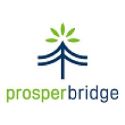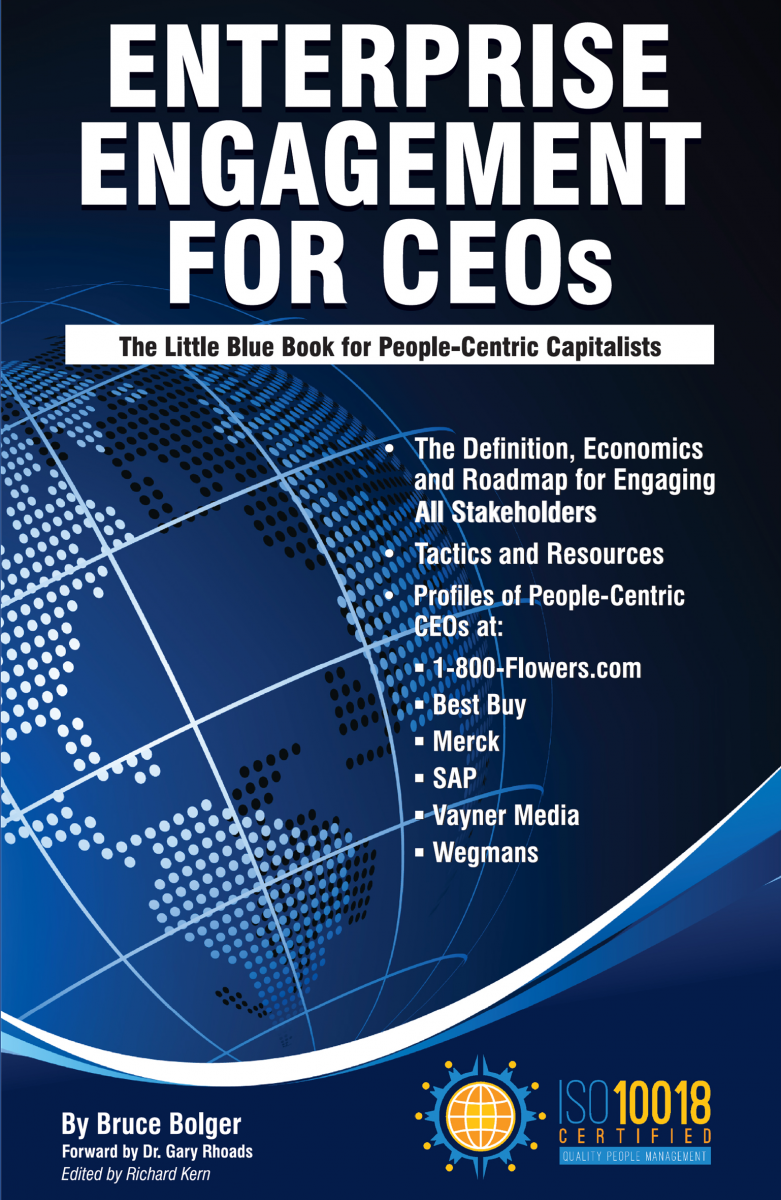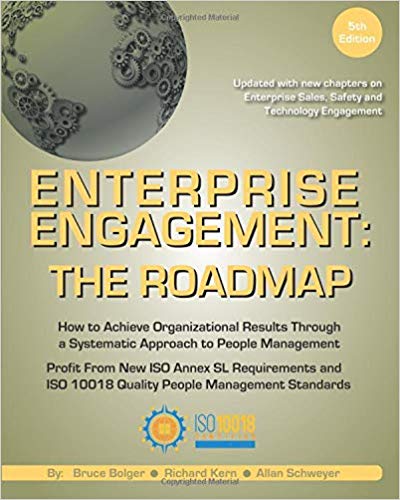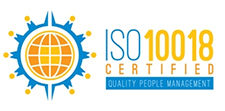This new employee benefit company aims to address a key cause of lower productivity and absenteeism—financial stress. While ProsperBridge offers a particular benefit to lower wage-scale employees, the founders aim to address the 800-pound gorilla in the room in almost any workforce—the challenges most people face managing their money, no matter how much they make. ProsperBridge also provides a unique professional opportunity for professionals in human resources or other small businesses that provide engagement services to clients.
During his many years in financial services, ProsperBridge co-founder
Jervis DiCicco says he learned one key lesson: a surprising number of people at all income levels have varying degrees of stress related to money simply because they don’t have the time, knowledge, or motivation to effectively manage it. There not only is a personal cost for financial stress but also a hefty price for employers to pay in terms of lost time and less engagement due to worries about personal matters.

To address the issue, ProsperBridge has created a unique combination of personal financial guidance, technology, and banking products to help employees at all levels set themselves on the path to greater financial health. Consider the statistics cited by company co-founder DiCicco to stress the benefits of his company’s services.
• 54% of American workers identify money as their primary source of stress, according to PwC Employee Financial Wellness Survey 2020 COVID-19 Update.
• Financially stressed employees cost companies 29-39 days each year in lost productivity: Inside the Wallets of Working Americans report.
• Just 15% of workers are confident in their ability to manage their money—A report from the
SHRM PaySolution/Money Network: Financial Literacy and the American Worker.
• There is an increased preventable accident risk in financially stressed individuals.

DiCicco and co-founder Maggie Drucker say they have a passion for helping people access financial progress and have created a unique business model. ProsperBridge provides a service designed to ensure transparent guidance and security to benefit people at every income level. The program includes: a Personal Prosperity Assistant (PPA) to establish and manage a financial plan based on each individual’s situation and goals; an interactive software platform that automatically gathers and organizes an individual’s monthly expenditures by category to establish and maintain a monthly budget and provide information on other financial needs, and a Capital Solutions suite that includes a bank account, a $2,000 credit line requiring no credit checks, and the ability to access additional emergency interest-free loans.
The Monthly Financial Progress Meeting
Foundational to the program, explains DiCicco, is the Personal Prosperity Assistant, who meets with each employee in scheduled monthly meetings during the workday. “It’s like having a personal CFO. This is not a call center; it’s a one-on-one relationship. Our PPAs are not financial advisors and they do not sell products, their job is to understand the situation and needs of each employee, which is in turn shared with our high-level back office team with the advanced experience to seek the best solution.” The pre-set monthly schedule during the workday is critical to success, DiCicco underlines.

The employee onboarding process starts with a 19-question, five-minute survey to assess each person’s current situation, challenges, and concerns to establish a prioritized plan. Issues could involve paying off credit cards; saving for college; supporting a sick family member; getting one’s legal affairs in order, such as wills and powers of attorney; obtaining the right insurance; establishing a savings plan, etc. Says DiCicco, “Based on the needs of employees for specific support, we help them optimize their existing resources, bring additional solutions to the table, and direct them to external resources when necessary. Our PPAs do not receive any commissions, so they have no incentive but to guide each employee in the right direction for their needs.”
Unlike the benefits representatives at open-enrollment time, “Our people serve as trusted advisors, not salespeople, which helps make employees feel more comfortable.” PPAs are not financial advisors, they are empathetic information gatherers and sharers of information, DiCicco explains. It’s an ideal position, he says, for human resources professionals or other providers of services to human resources departments who enjoy helping people solve problems.
The PPAs also take a load off the human resources personnel of their clients, DiCicco points out, because they help each participant select and utilize the benefits offered by their employer and take advantage of the options that make sense for their needs. “This helps organizations maximize engagement in their benefits plans while reducing the amount of time the HR staff needs to get involved.”
All activities are managed through a customer relationship management system to ensure that each PPA is meeting the company’s service level goals and that all employee preferences and issues are securely accessible to the PPA for each meeting.
DiCicco says PPAs are guides who serve as a go-between with employees and ProsperBridge’s back-office experts who provide specific recommendations. “Our PPAs, assigned to specific employees, are trained to use our software platforms and to have a basic understanding of the variety of challenges people face. But they are really there to empathetically gather and share information based on recommendations from our team of experts.” The PPA role, he points out, is an ideal position for retired or others from human resources, customer service, education--in other words, people who like to work with people.
Financial Management and Budgeting
The technology that ties the system together is the secure online financial aggregation software platform, equipped, DiCicco says, with military-grade security which each employee can set up using a secure process that does not store any of their account log-in information or social security numbers. The platform, known as MyBlocks, automatically captures income and expenses and organizes them by category that the employee can re-categorize as needed and monitor on a dashboard so they can continually track cashflow in real time. This platform enables employees to easily visualize their current financial situation at any time as well as set up budgets, savings, and other goals they can monitor and review with their PPA each month. “If an employee has a particular savings goal, he or she can discuss with the PPA steps they can take to stay or get back on track,” explains DiCicco.
The program also enables the PPA to suggest possible ways to save money, such as combining home and auto insurance, or making sure to carefully review healthcare options when the policies are up for renewal. “You’d be surprised how many people fail to take the basic step each year of reviewing their insurance policies to make sure they are getting the best value.” The PPAs also help employees evaluate choices related to car leases, life insurance, or supplemental disability insurance, for instance. “We want to make sure that people are protected from security-threatening life incidents,” DiCicco explains.
For employees receiving outside advice, the PPAs can act as advocate. “If the PPA hears that an employee is putting too much money into one product, such as Bitcoins or a high-commission investment, he or she can help inform the employee about the need for diversification and help the employee understand alternatives.”
A Capital Solutions Suite
The ProsperBridge platform includes a banking and credit solution particularly designed for employees living paycheck-to-paycheck, many of whom may not have bank accounts or credit cards. This includes a savings account and a credit line of $2,000 designed to provide an alternative to costly payday loans. Without need for a credit check, employees can access the money at 8% interest, which is automatically paid back through payroll deductions.
“This benefit is particularly valuable for the many employees who don’t have bank accounts or access to credit. In fact, those that use the short-term loan will automatically establish or improve their credit score because the money is paid back automatically,” DiCicco points out.
Employees can also use the service to automatically withdraw money from their paychecks to allocate for savings.
For emergencies, employees can borrow up to $2,500 interest free and even skip a payment using the employer’s Community Impact Loan. Once paid back, the money is available to other employees facing personal emergencies. The employer can set aside money to fund the emergency fund program and employees can contribute directly from payroll as well—anyone who contributes receives a tax deduction just as they would for donating to any other charity.
DiCicco says that the entire ProsperBridge program costs less than $30 per employee per month based on an annual program and that organizations can opt out at any time. The minimum is 50 participating employees per company. “’The No. 1 issue with any benefits program is adoption and engagement,” concludes DiCicco. “That’s why our program includes a monthly scheduled meeting with our PPAs during office hours. Having a scheduled program is critical to success.”
For More Information
Jervis DiCicco
303-954-4355
jervisd@prosperbridge.org
Master the Principles of Enterprise Engagement to Achieve Organizational Goals and Enhance Your Career
-
Profit from a new strategic and systematic approach to engagement to profit from the principles of Stakeholder Capitalism, enhance your organization’s brand equity; increase sales, productivity, quality, innovation, and safety, and reduce risks.
-
Get trained to become a Chief Engagement Officer for your organization.
-
Learn how to create Sustainability or Integrated Reports for Your Organization or Clients.
Learning and Certification: The Enterprise Engagement Alliance 2.0 education program, the only learning and certification platform for boards, executives, and managers seeking to understand the implementation principles of Stakeholder Capitalism, human capital management and measurement, and ROI of engagement. For more information, contact Bruce Bolger at Bolger@TheICEE.org or 914-591-7600, ext. 230.
Resources:
ESM at EnterpriseEngagement.org, an online trade publication founded in 2008 that features news, profiles, research, and more on the field of Enterprise Engagement, the implementation process for Stakeholder Engagement, and the EEXAdvisors.com buyer's guide and resource directory. This includes a comprehensive resource library on Stakeholder Capitalism, human capital management, measurement, and ROI of engagement.
RRN at RewardsRecognitionNetwork.com, an online trade publication founded in 1996 that features news, profiles, research and more on rewards, recognition, gifting and brand media, and the Brand Media Coalition, the only guide to the story-telling power of brands and where to source them for business, event, promotional gifting, and rewards and recognition. This features a comprehensive resource library on brand media, rewards, recognition, incentives, gifting and more.
The Enterprise Engagement Alliance Human Capital Management and ROI of Engagement Youtube channel featuring one-hour and 30-minute panel discussions with experts on multiple topics on Stakeholder Capitalism, Human Capital Management reporting and measurement, and engagement tactics.

Books:
Enterprise Engagement: The Roadmap 5th Edition
The first and most comprehensive book on Enterprise Engagement and the new ISO 9001 and ISO 10018 quality people management standards. Includes 36 chapters detailing how to better integrate and align engagement efforts across the enterprise. (312 pages, $36.)

Services:
• The International Center for Enterprise Engagement at TheICEE.org, offering: ISO 10018 certification for employers, solution providers, and Enterprise Engagement technology platforms; Human Resources and Human Capital audits for organizations seeking to benchmark their practices and related Advisory services for the hospitality field.
• The Engagement Agency at EngagementAgency.net, offering: complete support services for employers, solution providers, and technology firms seeking to profit from formal human capital management, reporting, and ROI of engagement practices for themselves or their clients, including Brand Alignment audits for brands and Capability audits for solution providers to make sure their products and services are up to date.
• C-Suite Advisory Services—Education of boards, investors, and C-suite executives on the economics, framework, and implementation processes of Enterprise Engagement.
• Speakers Bureau—Select the right speaker on any aspect of engagement for your next event.
• Mergers and Acquisitions. The Engagement Agency’s Mergers and Acquisition group focuses on helping organizations focused on people sell to the right buyer and on assisting engagement solution providers seeking an exit or merger. Contact Michael Mazer in confidence if your company is potentially for sale at 303-320-3777.
Enterprise Engagement Benchmark Tools: The Enterprise Engagement Alliance offers three tools to help organizations profit from Engagement. Click here to access the tools.
• ROI of Engagement Calculator. Use this tool to determine the potential return-on-investment of an engagement strategy.
• EE Benchmark Indicator. Confidentially benchmark your organization’s Enterprise Engagement practices against organizations and best practices.
• Compare Your Company’s Level of Engagement. Quickly compare your organization’s level of engagement to those of others based on the same criteria as the EEA’s Engaged Company Stock Index.
• Gauge Your Personal Level of Engagement. This survey, donated by Horsepower, enables individuals to gauge their own personal levels of engagement.
For more information, contact Bruce Bolger at Bolger@TheICEE.org, 914-591-7600, ext. 230.

 DiCicco and co-founder Maggie Drucker say they have a passion for helping people access financial progress and have created a unique business model. ProsperBridge provides a service designed to ensure transparent guidance and security to benefit people at every income level. The program includes: a Personal Prosperity Assistant (PPA) to establish and manage a financial plan based on each individual’s situation and goals; an interactive software platform that automatically gathers and organizes an individual’s monthly expenditures by category to establish and maintain a monthly budget and provide information on other financial needs, and a Capital Solutions suite that includes a bank account, a $2,000 credit line requiring no credit checks, and the ability to access additional emergency interest-free loans.
DiCicco and co-founder Maggie Drucker say they have a passion for helping people access financial progress and have created a unique business model. ProsperBridge provides a service designed to ensure transparent guidance and security to benefit people at every income level. The program includes: a Personal Prosperity Assistant (PPA) to establish and manage a financial plan based on each individual’s situation and goals; an interactive software platform that automatically gathers and organizes an individual’s monthly expenditures by category to establish and maintain a monthly budget and provide information on other financial needs, and a Capital Solutions suite that includes a bank account, a $2,000 credit line requiring no credit checks, and the ability to access additional emergency interest-free loans. The employee onboarding process starts with a 19-question, five-minute survey to assess each person’s current situation, challenges, and concerns to establish a prioritized plan. Issues could involve paying off credit cards; saving for college; supporting a sick family member; getting one’s legal affairs in order, such as wills and powers of attorney; obtaining the right insurance; establishing a savings plan, etc. Says DiCicco, “Based on the needs of employees for specific support, we help them optimize their existing resources, bring additional solutions to the table, and direct them to external resources when necessary. Our PPAs do not receive any commissions, so they have no incentive but to guide each employee in the right direction for their needs.”
The employee onboarding process starts with a 19-question, five-minute survey to assess each person’s current situation, challenges, and concerns to establish a prioritized plan. Issues could involve paying off credit cards; saving for college; supporting a sick family member; getting one’s legal affairs in order, such as wills and powers of attorney; obtaining the right insurance; establishing a savings plan, etc. Says DiCicco, “Based on the needs of employees for specific support, we help them optimize their existing resources, bring additional solutions to the table, and direct them to external resources when necessary. Our PPAs do not receive any commissions, so they have no incentive but to guide each employee in the right direction for their needs.”
















